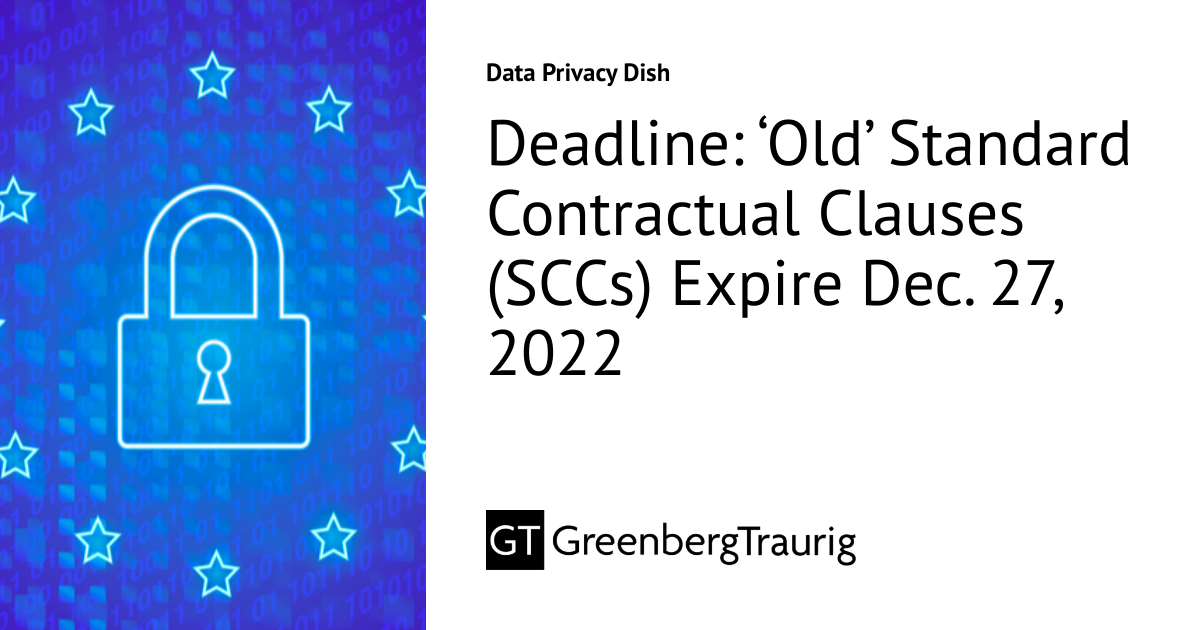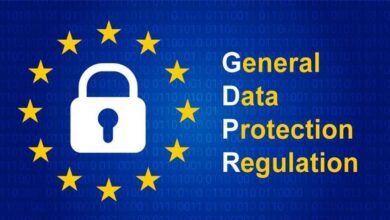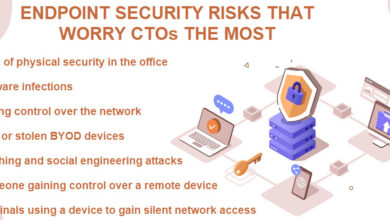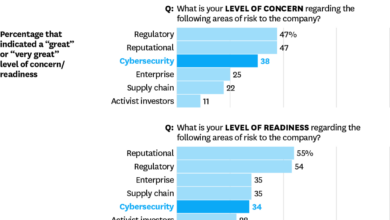
Data Transfer Amendment to Update SCCs
Data Transfer Amendment to Update SCCs: Navigating the complex world of international data transfers just got a whole lot more interesting (and maybe a little more confusing!). Recent changes to the Standard Contractual Clauses (SCCs) have sent ripples through the business world, impacting how companies handle data across borders. This post breaks down the key changes, explores their implications, and helps you navigate this new landscape.
Get ready to dive into the nitty-gritty of data protection and compliance!
We’ll unpack the core functionalities of the SCCs, highlighting the specific modifications introduced by the amendment. We’ll compare the old and new versions, focusing on the legal ramifications and practical challenges businesses might encounter. Think step-by-step guides, handy checklists, and real-world examples to make this less of a legal headache and more of a manageable process. Let’s get started!
Understanding the SCCs and Data Transfer Amendment
The Standard Contractual Clauses (SCCs) are a set of pre-approved contractual clauses designed by the European Commission to ensure compliance with the EU’s General Data Protection Regulation (GDPR) when transferring personal data outside the European Economic Area (EEA). These clauses aim to provide adequate safeguards for the data subject’s rights, even when the data is processed in a country with less stringent data protection laws.
The recent amendment to the SCCs reflects the evolving legal landscape and aims to strengthen data protection in the context of international data transfers.
Core Functionalities of the SCCs
The SCCs establish a framework for data controllers and processors transferring personal data outside the EEA. They define the responsibilities of each party involved in the transfer, including obligations regarding data security, data subject rights, and dispute resolution. Crucially, they ensure that the receiving party adheres to standards equivalent to those in the EEA, mitigating the risks associated with transferring data to countries with potentially weaker data protection regimes.
The clauses cover various aspects of data processing, from the purpose of the transfer to the security measures implemented to protect the data.
Changes Introduced by the Data Transfer Amendment
The amendment to the SCCs primarily addresses the concerns raised by the Court of Justice of the European Union (CJEU) in its Schrems II judgment. This judgment invalidated the Privacy Shield framework, highlighting the need for stronger safeguards in international data transfers. The amendment introduces several key changes to bolster the protection of personal data transferred outside the EEA.
These changes include clarifying the obligations of the data exporter and importer, enhancing the mechanisms for addressing potential conflicts, and strengthening the provisions related to data security and subject rights. The updated SCCs provide a more robust and legally sound framework for ensuring compliance with the GDPR in the context of international data transfers.
Comparison of Old and Amended SCCs
The previous version of the SCCs, while providing a baseline level of protection, lacked the explicit provisions and strengthened enforcement mechanisms found in the amended version. The key difference lies in the enhanced focus on the data importer’s obligations and the increased emphasis on ensuring compliance with GDPR principles even in jurisdictions with less robust data protection laws. The amended SCCs provide clearer guidance on data security measures, dispute resolution, and the enforcement of data subject rights.
This makes them more effective in safeguarding the rights of data subjects and ensuring compliance with the GDPR.
Legal Implications of the Amendment, Data transfer amendment to update sccs
The amendment to the SCCs carries significant legal implications for organizations transferring personal data outside the EEA. Failure to comply with the amended SCCs can result in significant penalties, including substantial fines. Organizations are required to update their data transfer mechanisms to align with the amended SCCs, ensuring that their international data transfer activities are compliant with the GDPR.
This requires a comprehensive review of existing contracts and data transfer processes, potentially necessitating changes to internal policies and procedures. The amendment underscores the growing importance of data protection in the context of globalization and emphasizes the need for organizations to prioritize compliance with evolving legal standards.
Key Changes in the SCCs
| Feature | Old SCCs | Amended SCCs | Impact |
|---|---|---|---|
| Data Importer Obligations | Less specific; relied on general GDPR principles. | More detailed and explicit obligations regarding data security, subject rights, and compliance with GDPR. | Increased accountability and clarity for data importers. |
| Dispute Resolution | Less robust mechanisms; potential for lengthy and complex processes. | Improved dispute resolution mechanisms, including binding arbitration. | Faster and more effective resolution of disputes. |
| Data Security | General requirements; less emphasis on specific technical and organizational measures. | Stronger emphasis on specific security measures and ongoing monitoring. | Enhanced data protection and reduced risk of breaches. |
| Enforcement | Relied heavily on supervisory authorities in the data exporter’s jurisdiction. | Clarified roles and responsibilities for both data exporter and importer, enabling more effective enforcement. | Improved accountability and strengthened enforcement mechanisms. |
Impact on Data Transfer Processes

The amendment to the Standard Contractual Clauses (SCCs) significantly alters the landscape of international data transfers, introducing new requirements and responsibilities for organizations. Understanding these changes and their practical implications is crucial for ensuring ongoing compliance and avoiding potential legal repercussions. This section delves into the practical impact on data transfer processes, highlighting potential challenges and outlining steps for successful adaptation.
Practical Implications of the Amendment on Data Transfer Procedures
The revised SCCs place a greater emphasis on accountability and transparency throughout the data transfer lifecycle. This means organizations must implement robust mechanisms to monitor the transfer of personal data, ensure compliance with applicable laws, and effectively address data subject rights requests. The amendment also introduces stricter requirements for documenting data transfer processes and providing greater clarity regarding the roles and responsibilities of involved parties.
For example, the updated SCCs necessitate a more thorough assessment of the risks associated with each data transfer, including a detailed analysis of the legal framework in the receiving country. This will inevitably increase the administrative burden for organizations conducting international data transfers.
Potential Challenges Businesses Might Face in Adapting to the New SCCs
Adapting to the amended SCCs presents several challenges for businesses, particularly those with complex international data flows. One key challenge is the need for comprehensive documentation. Organizations must meticulously document their data transfer processes, risk assessments, and compliance measures. This requires significant investment in time and resources. Another significant hurdle is the increased complexity of the SCCs themselves.
The revised clauses are more detailed and nuanced, requiring a deeper understanding of data protection law and international legal frameworks. Furthermore, the increased emphasis on accountability necessitates a more proactive approach to data protection, potentially requiring investment in new technologies and expertise. For instance, a small business relying heavily on third-party cloud providers may find it difficult to fully assess and mitigate all the risks associated with their data transfer agreements, requiring a significant investment in legal advice.
Steps Organizations Need to Take to Ensure Compliance with the Amendment
To ensure compliance, organizations must undertake a multi-faceted approach. Firstly, a thorough review of all existing data transfer agreements is essential. This includes identifying all international data transfers and assessing their compliance with the amended SCCs. Secondly, organizations must conduct thorough risk assessments, specifically addressing the risks associated with data transfers to each specific jurisdiction. This requires a detailed understanding of the applicable data protection laws in each recipient country.
Thirdly, organizations must update their internal policies and procedures to reflect the new requirements. This includes establishing clear roles and responsibilities, implementing robust data protection measures, and creating mechanisms for addressing data subject requests. Finally, regular monitoring and auditing of data transfer processes are crucial to ensure ongoing compliance and to identify any potential issues early on.
Best Practices for Updating Data Transfer Agreements in Light of the Amendment
Best practices include engaging legal counsel specializing in data protection law to review and update existing data transfer agreements. This ensures compliance with the amended SCCs and avoids potential legal pitfalls. Organizations should also prioritize clear and concise contractual language, avoiding ambiguity that could lead to disputes. Furthermore, it is crucial to incorporate robust mechanisms for dispute resolution into data transfer agreements.
This could include provisions for mediation or arbitration to address potential disagreements effectively. Finally, organizations should adopt a proactive approach to data protection, anticipating potential challenges and implementing measures to mitigate them before they arise. For example, regularly reviewing and updating data transfer agreements to reflect changes in legislation or best practices.
Step-by-Step Guide for Updating Existing Data Transfer Processes
To ensure compliance with the amended SCCs, organizations should follow these steps:
- Identify all international data transfers: Conduct a comprehensive audit to identify all instances where personal data is transferred internationally.
- Assess compliance with the amended SCCs: Review each data transfer against the requirements of the amended SCCs.
- Conduct a Data Protection Impact Assessment (DPIA): Assess the risks associated with each data transfer and implement appropriate mitigation measures.
- Update data transfer agreements: Amend existing agreements to reflect the requirements of the amended SCCs.
- Implement robust data protection measures: Strengthen internal data protection policies and procedures to ensure compliance.
- Establish clear roles and responsibilities: Define the roles and responsibilities of all parties involved in data transfers.
- Implement mechanisms for addressing data subject requests: Establish processes for handling data subject access, rectification, erasure, and restriction requests.
- Monitor and audit data transfer processes: Regularly monitor and audit data transfer processes to ensure ongoing compliance.
Data Security and Privacy Considerations
The amended SCCs represent a significant step forward in bolstering data security and privacy protections for individuals whose data is transferred internationally. This enhanced framework addresses evolving threats and clarifies responsibilities, offering a more robust and compliant mechanism for organizations handling cross-border data flows. Let’s delve into the key improvements and implications.
Enhanced Data Security and Privacy Protections
The revised SCCs introduce stronger safeguards for personal data, incorporating provisions aligned with the GDPR and other leading data protection standards. These include more stringent requirements for data security measures, such as encryption and access controls, and clearer obligations regarding data breach notification and incident response. Importantly, the amendment emphasizes the need for organizations to conduct thorough Data Protection Impact Assessments (DPIAs) to proactively identify and mitigate potential risks to data privacy.
This proactive approach shifts the focus from reactive compliance to a more preventative model. For instance, the new SCCs mandate more detailed documentation of the technical and organizational measures implemented to secure data transferred, moving beyond simply stating that security measures are in place.
The Role of Data Protection Officers
Data Protection Officers (DPOs) play a crucial role in ensuring compliance with the amended SCCs. Their responsibilities extend beyond simply reviewing data transfer agreements; they are now expected to actively participate in the design and implementation of data protection measures, provide guidance on compliance issues, and monitor the effectiveness of implemented safeguards. DPOs are essential in ensuring that organizations not only meet the minimum requirements of the SCCs but also adopt a proactive and risk-based approach to data protection.
A well-resourced and empowered DPO can be instrumental in preventing data breaches and ensuring the ongoing compliance of the organization’s data transfer processes.
Comparison of Data Subject Rights Under Old and New SCCs
While the fundamental data subject rights (access, rectification, erasure, etc.) remain largely unchanged, the amended SCCs clarify the responsibilities of data importers and exporters in facilitating the exercise of these rights. The new SCCs place a greater emphasis on ensuring that data subjects can easily exercise their rights, even when their data is processed in a third country. This includes clearer obligations for data importers to respond to data subject requests in a timely and transparent manner and to provide adequate information about the processing of their data.
For example, the updated clauses provide a more structured process for responding to subject access requests, including specific timeframes and methods for providing information.
Checklist for Assessing Data Transfer Process Compliance
Before implementing data transfers using the amended SCCs, organizations should conduct a thorough assessment. This checklist can help:
- Has a DPIA been conducted to assess the risks associated with the data transfer?
- Have appropriate technical and organizational security measures been implemented to protect the transferred data (encryption, access controls, etc.)?
- Are data subject rights clearly defined and readily accessible to data subjects?
- Have procedures been established for handling data subject requests (access, rectification, erasure)?
- Is there a clear process for reporting and responding to data breaches?
- Has the organization designated a DPO and defined their responsibilities?
- Are all relevant personnel trained on the amended SCCs and their implications?
- Is there a mechanism in place for regular monitoring and review of data transfer processes?
Examples of Significant Impacts on Data Handling Procedures
The amendment significantly impacts data handling in several scenarios. For instance, organizations transferring sensitive personal data (e.g., health data, biometric data) will need to implement even more robust security measures than previously required. Similarly, organizations relying on third-party processors for data processing will need to ensure that their contracts with those processors reflect the enhanced requirements of the amended SCCs, including clear obligations regarding data security and subject rights.
A company transferring customer financial data will need to rigorously document its security measures and incident response plan, demonstrating compliance with the higher standards set by the updated SCCs. Failure to comply could result in significant penalties and reputational damage.
Future Implications and Potential Developments: Data Transfer Amendment To Update Sccs

The data transfer amendment to the SCCs represents a significant shift in the international data protection landscape. Its long-term effects will ripple across various sectors, influencing how businesses operate globally and how individuals’ data is handled. Understanding these potential implications is crucial for navigating the evolving regulatory environment.The amendment’s impact on international data flows will likely be multifaceted.
We can expect increased scrutiny of data transfer mechanisms, potentially leading to more complex and time-consuming compliance processes. Businesses might find themselves needing to reassess their existing data transfer strategies and invest in new technologies or legal expertise to ensure ongoing compliance. This could, in turn, lead to higher operational costs and potentially slow down international collaborations.
However, the increased clarity provided by the amendment might also foster greater trust and transparency, ultimately benefiting both businesses and individuals. For example, companies might see improved relationships with data protection authorities through proactive compliance, leading to fewer investigations and penalties.
Further Amendments and Revisions to the SCCs
The SCCs are a living document, and further amendments or revisions are highly probable. The rapid evolution of technology and the ongoing refinement of data protection standards necessitate regular updates. Future amendments might address emerging technologies like AI and the Internet of Things, providing clearer guidance on how to apply the SCCs in these contexts. They may also clarify specific grey areas or incorporate lessons learned from enforcement actions and judicial decisions.
For instance, future versions might include more detailed provisions on data subject rights within the context of international data transfers.
Areas Requiring Further Clarification or Guidance
Several areas within the amendment could benefit from further clarification. The interpretation of certain clauses, particularly those related to the assessment of appropriate safeguards and the role of supervisory authorities, could be subject to differing interpretations. Guidance on the practical application of the amendment in specific industry sectors would also be valuable. For example, clearer guidance on data transfers involving cloud services or those utilizing innovative technologies would reduce ambiguity and facilitate compliance.
Furthermore, the interaction between the SCCs and other data protection mechanisms, such as binding corporate rules (BCRs), could be further clarified to prevent inconsistencies.
Stakeholder Responses to the Amendment
The amendment’s reception across different stakeholders is likely to be varied. Data protection authorities might welcome the increased clarity and consistency it offers, enabling more effective enforcement. However, some businesses, especially smaller enterprises, might find the new requirements burdensome and costly. Data protection advocates may assess the amendment’s effectiveness in protecting individuals’ rights, potentially advocating for further improvements.
International organizations and cooperation bodies might need to adjust their existing frameworks and guidelines to align with the amended SCCs. For example, the response from the European Data Protection Board (EDPB) will be crucial in shaping the practical application of the amendment.
Potential Future Challenges
The successful implementation of the data transfer amendment will face several potential challenges.
- Enforcement and Consistency: Ensuring consistent enforcement of the amendment across different jurisdictions remains a key challenge.
- Technical Complexity: Implementing the technical safeguards required by the amendment may prove challenging for some organizations, particularly those with limited resources.
- Legal Uncertainty: Continued uncertainty around the interpretation of specific clauses may lead to inconsistent application and potential legal disputes.
- Resource Constraints: Compliance with the new requirements may place significant financial and human resource burdens on organizations.
- Adapting to Technological Advancements: The rapid pace of technological innovation necessitates ongoing adaptation of the SCCs and related guidelines.
Ending Remarks
Updating your data transfer processes to comply with the amended SCCs might seem daunting, but with a clear understanding of the changes and a structured approach, it’s entirely achievable. Remember, staying compliant isn’t just about ticking boxes; it’s about protecting your data, your business, and your customers’ trust. This amendment represents a significant shift in data protection, and by proactively adapting, you can ensure a smooth transition and maintain a strong security posture in an increasingly complex global landscape.
So, grab your checklist, review your agreements, and let’s make sure your data transfers are future-proof!
Questions and Answers
What happens if I don’t update my SCCs?
Failure to update your SCCs to comply with the amendment could lead to legal repercussions, including fines and potential legal action from data protection authorities.
How long do I have to update my SCCs?
There’s no single deadline; however, it’s crucial to update your agreements as soon as possible to ensure ongoing compliance. Delays could expose your organization to risks.
Do these changes apply to all international data transfers?
The changes generally apply to international data transfers where the SCCs are used. Specific circumstances might require additional considerations.
Where can I find the official text of the amended SCCs?
The official text of the amended SCCs can be found on the website of the relevant data protection authority (e.g., the European Commission).





